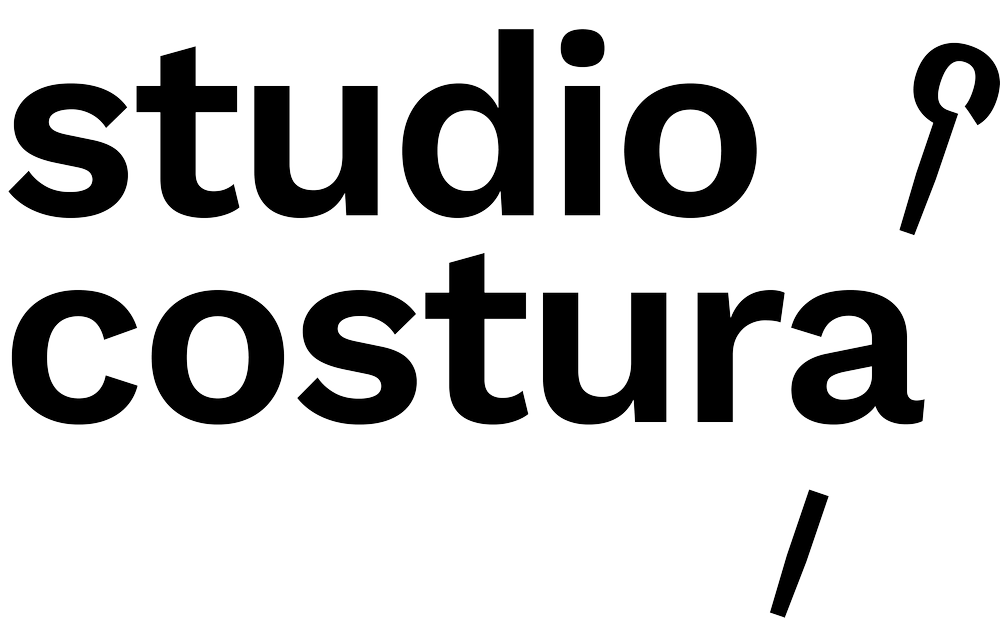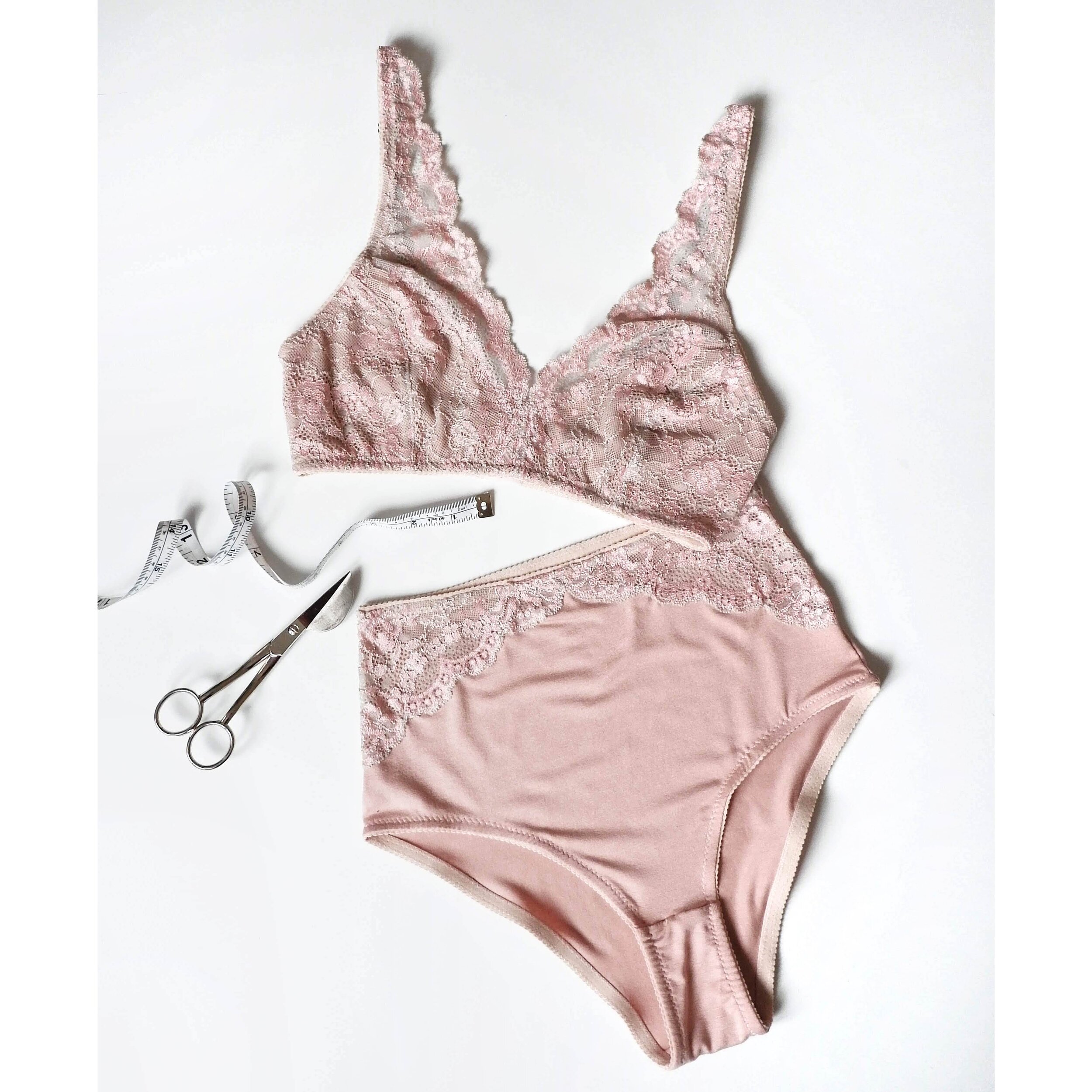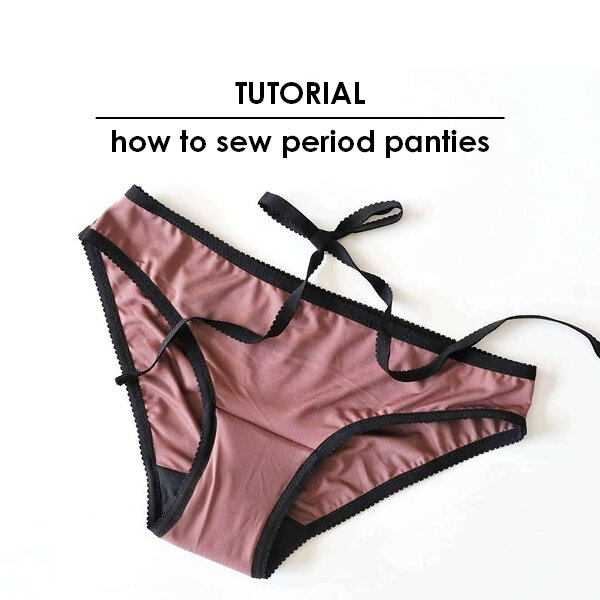Today I’m bringing you a simple tutorial about a pattern hack for panties. When I launched my latest pattern Eva panties I got a couple of questions about making adjustments for the crotch width. So I’m going to explain how to do it and when you might need to do an adjustment like this. I’m also covering an easy way to play around with the height of the leg openings so keep on reading if you’re into getting the most out of your sewing patterns.
First of all if you are unfamiliar with the pieces that form a pattern for panties, these are usually the font and back and the crotch piece. When drafting my patterns I use standard measurements for all those parts and the crotch width is usually the same in all sizes (the length varies in every size).
But every body is different and apart from the actual size of your body measurements there are other things to consider when talking about such a particular thing like crotch width. Everyone has their own preferences and a comfortable pair of panties for one person can be not so comfortable for someone else. Women's bodies are in constant change, whether it's the age or giving birth, your body keeps changing and your needs keep on changing too. Talking about crotch width here, many women prefer this piece to be wider and it’s an easy fix when you sew as we can make custom underwear easily :)
Hoy os traigo un sencillo tutorial sobre cómo modificar patrones de braguitas. Cuando publiqué mi nuevo patrón de braguitas Eva recibí preguntas sobre cómo hacer ajustes de la parte de entrepierna. Así que explicaré cómo hacerlo y cuándo puede que tengas que hacer ajustes como ésta. También voy a hablar sobre cómo modificar el alto de la abertura de las piernas así que sigue leyendo si quieres sacar lo máximo de tus patrones de costura.
Primero si no conoces las partes del patrón para las braguitas, normalmente son el delantero, el trasero y la parte de entrepierna. Cuando hago mis patrones uso las medias estándar para todas estas partes y el ancho de entrepierna suele ser lo mismo en todas las tallas (el largo varía según las tallas).
Pero cada cuerpo es diferente y aparte de que las medidas de tu cuerpo sean distintas también hay otros aspectos que considerar cuando hablamos de una cosa tan concreta como el ancho de la entrepierna. Cada una tiene sus preferencias y un par de braguitas que resulta cómodo para una persona puede que no lo sea para otra. Los cuerpos de las mujeres están constantemente cambiando, sea la edad o el hecho de dar luz, tu cuerpo cambia y sus necesidades también cambian. Hablando del ancho de la entrepierna, hay muchas mujeres que prefieren que esa parte sea más ancha y es un cambio fácil de hacer cuando coses tu propia ropa ya que puedes hacer ropa customizada fácilmente :)
To make an adjustment for the crotch width you first need to put the front, crotch and back pieces in the correct order. I’m using the Vera panties pattern in this example but you can use any kind of pattern you have. Note that the crotch piece is on fold as we’re adjusting it on fold (like the front and the back). Overlap the pieces by 12 mm (½ in) to eliminate the seam allowances (in this particular pattern) in order to draw smooth lines in the next step.
I’ve also already talked about how to adjust the crotch length in a previous post about making pattern adjustments for period panties, if this is something you’d like to do also just read about this part in that post.
Para modificar el ancho de la entrepierna tienes que poner primero las piezas del patrón en el orden correcto: el delantero, la entrepierna y el trasero. Estoy usando el patrón de braguita Vera para este ejemplo pero puedes usar cualquier patrón. Recuerda que la pieza de entrepierna va en doblez ya que lo modificamos en doblez (igual que el delantero y el trasero). Sobrepasa las piezas por 12 mm para eliminar los márgenes de costura (en este patrón particular) para poder crear líneas suaves en el siguiente paso.
También he hablado sobre el largo de la pieza de entrepierna en el post sobre cómo modificar tus patrones de braguitas para crear braguitas menstruales, si esto es algo que te interesa puedes leer más en este post.
So now you can add more width to the crotch piece. How much? It really depends on your preferences and I can’t give you an exact number. As this piece is on fold, whatever the amount is that you’re adding here will be double so there’s no need to add a lot. One thing you can do is to measure the crotch piece on a pair of panties that you already own and like so you can get the idea of what you need to add for your panties. Also remember that you are using elastics on the leg opening, this means that there’s the elastic seam allowance included in the pattern pieces and it will be folded under once the elastic is attached which means that the piece itself will be smaller. The width of the crotch piece you need to have on your pattern piece is half of the desired crotch width (measure your favourite pair) + the width of the elastic you are going to use. Once you know the width just mark the extra on the narrowest part of the crotch piece and then smooth the lines out to form an even shape with the rest of the pieces. It’s OK to add a bit for the front and the back, you are making the crotch piece wider so you need to smoothen that new width out.
Then just divide the pieces again and add the seam allowances that are missing. It’s easy, right?
Ahora puedes añadir más ancho a la pieza de entrepierna. Cuánto más? Esto realmente depende de tus preferencias y no te puedo dar un número exacto. Ya que la pieza está doblada, lo que añadas ahora va a ser doble así que no hace falta añadir mucho. Una cosa que puedes hacer es medir el ancho de entrepierna en un par de braguitas que ya tienes y que te resultan cómodas así que puedes hacerte la idea de cuánto tienes que añadir a tu patrón. También recuerda que vas a coser elástico en la abertura de la pierna, eso significa que el margen de costura que necesitas para poder coser los elásticos está incluída en las piezas y lo vas a doblar hacia abajo cuando hayas cosido el elástico y la pieza en sí se queda más pequeño. El ancho de la pieza de entrepierna que tiene que tener tu pieza es la mitad del ancho deseado (midelo en tu par de braguitas) + el ancho de elástico que vayas a usar. Cuando sabes el ancho necesario simplemente marca este ancho en la parte más estrecha de la pieza de entrepierna y suaviza las líneas añadiendo más margen para unir la entrepierna con el resto de las piezas. Está bien añadir un poco al delantero y el trasero para que las piezas cuadren bien y que haya una curva suave al unir las piezas entre sí.
Después separa las piezas y añade el margen que falta donde sea necesario. Es fácil, verdad?
So in this second example let’s say that you also want your panties to have more overall coverage apart from wider crotch. This one is easy too. You need to add fabric to the side seams and make the leg openings lower. The key here is to add the same amount of extra fabric for the front and the back side seam so that the pieces will line up. How much? Again it’s your choice. I think that the best way to do it is to first try out the particular pattern you are working with. Make a sample pair, try them on and measure on your body how much lower you’d like the panties to sit. Transfer this measurement onto your pattern pieces remembering to add seam allowance for the elastic you are using. If you want to make your panties have higher cut leg openings you do the same but instead of adding fabric you’ll be taking it away, just draw a new smooth line for the leg openings. I wouldn’t suggest taking away fabric close to the crotch area as you’d be making this part too narrow.
En este segundo ejemplo vamos a ver el caso cuando quieres que la braguita tenga en general más “cobertura” aparte de tener la entrepierna más ancha. Esto también es fácil. Tienes que añadir tela a los laterales para bajar las aberturas de las piernas. La clave aquí es añadir la misma cantidad extra tanto al lateral delantero que el trasero para que las piezas cuadren. Cuánto? De nuevo es tu elección. Pienso que la mejor manera es primero hacer una muestra con el patrón que estás usando y probarlo. Mide en tu cuerpo dónde te gustaría que vayan las aberturas de las piernas. Pasa esta medida a las piezas de patrón y recuerda que necesitas márgenes de costura para los elásticos también. Si quieres que las aberturas de las piernas estén más arriba haces lo mismo pero en vez de dar más tela lo quitas en los laterales. Dibuja curvas suaves para las nuevas aberturas de las piernas. No recomiendo quitar nada cerca de la entrepierna ya que puedes hacer esta parte demasiado estrecha.
That’s it for this quick pattern adjustment tutorial. This topic came up because some of my students wanted to use the new Eva panties pattern to make panties as gifts for the upcoming mothers day. The easiest way to know the size you should be making for someone else is to ask for measurements of a pair they already own and like. I hope this was useful! Remember that a pattern is just a starting point and you can always play around with it to get the fit that is right for you! If you need more ideas for hacking your sewing patterns get my free e-book about sewing panties by subscribing to my newsletter.
Y eso es todo para esta modificación fácil. Este tema surgió cuando algunas de mis alumnas querían usar el nuevo patrón de braguita Eva para coserlo de regalo para sus madres ya que pronto es el día de la madre. Lo más fácil para saber qué talla hacer si vas a regalar algo que coses es pedir que te midan un par que ya tienen y que les gusta. Espero que esto haya sido útil! Recuerda que el patrón es sólo el punto de comienzo y siempre puedes adaptarlo para conseguir que te quede como más te guste a ti! Si quieres saber más sobre cómo modificar tus patrones de braguitas para hacer aún más versiones puedes consultar mi libro electrónico sobre coser braguitas, es gratis si te subscribes a mi newsletter.









































































































































